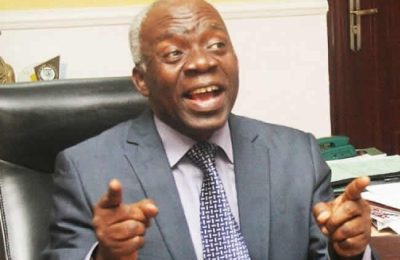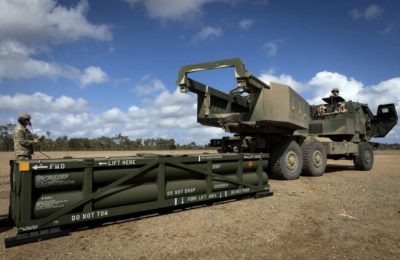IN continuation of his engagement with key stakeholders, Barrister Caleb Mutfwang, Plateau State governor-elect, undertook another visit on April 6, 2023. These are aimed at laying the foundation for the smooth take-off of his administration and providing a realistic template for the seamless conduct of government business towards the realisationof his manifesto without delay. He was at the Federal Ministry of Mines and Steel headquarters in Abuja where he had a very fruitful interface with the minister, Olamilekan Adegbite. Certainly, he has shown that he is not an armchair governor-in-waiting. He has portrayed himself as a highly motivated leader who has already began pursuing the agenda on which strength the masses unanimously gave him that remarkableendorsementof March 18, 2023. But first, let us look at the past to properly situate and contextualise the present gains of that engagement with the minister and the potentials it holds for the future of the state and her people. In the process, we may catch a glimpse of, and appreciate, Barrister Mutfwang’s capacity for both hindsight and foresight – outstanding qualities in a worthy leader.
In an article published in The Economic Geography Journal (Vol. 35, No.2, April 1959), B.W. Hodder stated that in the latter part of the nineteenth century, European travellers noticed what was known as ‘straw tin’ being used by the Hausa for tinning their brass and assumed that it was brought from up north, from across the Sahara Desert. But in 1884, according to the researcher, it was discovered that the tin had in fact come from the Jos Plateau, known at the time as Bauchi Plateau. Much later, in March 1990, The Geographical Journal, Vol. 156, No.1, carried a paper written by Michael J. Alexander who traced the discovery of tin on the Jos Plateau to 1700-1750 when it was found near river channels. He explained: “The farmers saw tin minerals and crystals near the river. They realized by mixing tin and iron, they could have stronger agricultural instruments.” He noted that, by 1760-1770, there were 13 indigenous blacksmith smelters in Naraguta, north of Jos, and that tin hadbecome very popular during the industrial revolution in Europe. Merchants travelled from Tripoli to the Jos Plateau to buy tin, which explains Hodder’s earlier suggestion that this same tin had been found in Tripoli. But it was thought to have originated from what later came to be known as Northern Nigeria. Alexander sheds more light on this: “The Berom ethnic group were finding and producing tin along the Dilimi River for the ethnic Hausa traders…. The Hausa traders did not want people to know the original source of tin so that is why they put the buying centre in Bauchi.”In 1808, a Briton named Clapperton travelled for three months across the Sahara to find the Naraguta smelters.
By the year 1913, 108 mining companies had to go through the Royal Niger Company to gain access to the mine fields. “A railway was discovered from Zaria to Lagos for the export of tin. By 1943, tin mining on the Jos Plateau was at its peak….Up to 1960, Jos was the sixth largest producer of tin in the world. Two hundred twenty-five kilometres of land was taken out by tin mining,” Alexander stated. We have taken this brief excursion down memory lane to, first, illustrate the incredibly rich pedigree of Jos, and indeed Plateau State as a whole, in tin and solid minerals mining generally. Second, to showcase the fact that there was once a time in the history of this country, nay, even going back to the colonial era, when this tiny slice of the earth, which later came to be known as Plateau State, was one of the biggest geese laying the golden eggs of this nation. For which it was well-acclaimed and acknowledged worldwide. And, most significantly, when you put the above historical facts side-by-side the governor-elect’s visit to the Minister of Mines and Steel, it shows him as a man who is in perfect cinque with the realities of that past epoch. A manvery set to leverage on what is still left of that once huge enterprise and the other solid minerals that abound today in the other parts of the state to lift its economy out of the doldrums.

Of course, tin mining is no more as lucrative as it used to be. Alexander attributed this to the use of plastics and other non-corrosive materials in place of tin cans. Also, because informal artisanal mining has become the order of the day, what comes out of the Plateau is often smuggled out and used to strengthen tin in Brazil, Malaysia and Bolivia because Jos tin is reputed to be much stronger.
He added that because all exploitable minerals belong to government, companies must obtain tin mining leases to access them. But because ordinary miners cannot afford the huge costs, most of them resort to doing the business illegally. And the products end up in the hands of smugglers who make humongous profits at the expense of the desperate miners. Unfortunately, this is what obtains across board – in all aspects of solid minerals extraction in Plateau State. Herein lies the challenge for the in-coming governor, the minister and key stakeholders. Illegal mining in Plateau State is a multi-million-dollar business. It is so pervasive and largely out of the control of any major state players that it is denying governments, the itinerant miners themselves and the environmentally devastated communities their own rightful share of the proceeds. This brings to the fore the necessity to strictly use ecological funds for which purposes they are statutorily meant. Parts of Kanam and Wase local government areas are said to be heavily endowed with mineral resources that have for decades been strictly controlled by powerful individuals and cartels that have become laws unto themselves. These must be stopped if the state and its citizens must reap the benefits of their God-given resources. When properly controlled and managed, the devastation of land caused by the open cast tin mining of the past will be avoided in any such future endeavours. Also viewed from these perspectives, the imperative of the governor-elect’s visit to the ministerbecomes even clearer. Experts in the solid minerals sector say that, in tandem with Mr. Mutfwang’s manifesto in this area, there remains a lot to be done. But they agree that these first steps are in the right direction and a positive sign that agreat deal will be achieved in this departmentimmediately he takes over. They suggest a robust utilization of the abundant expertise in some of the parastatals of the Ministry such as the Council of Nigerian Engineers and Geoscientists (COMEG), Mining Cadastre Office (MCO) and the National Metallurgical Development Centre (NMDC), among others, to push through the agenda. All over the state, solid minerals abound – some of which have not yet been discovered. In fact, there has been talk about the presence of crude oil in those parts of southern Plateau which lie in the Benue trough. Doubtless, the governor-elect has started oiling the wheels of critical machinery towards the smooth implementation of government policies. And if the minister’s assurances are anything to go by and Mutfwang’s determination is as solid as it appears, the state is on the cusps of a new dispensation, reminiscent of the golden days of tin mining, in the solid minerals department.
- Gyang is Chairman, Journalists Coalition for Citizens’ Rights Initiative
READ ALSO FROM NIGERIAN TRIBUNE







